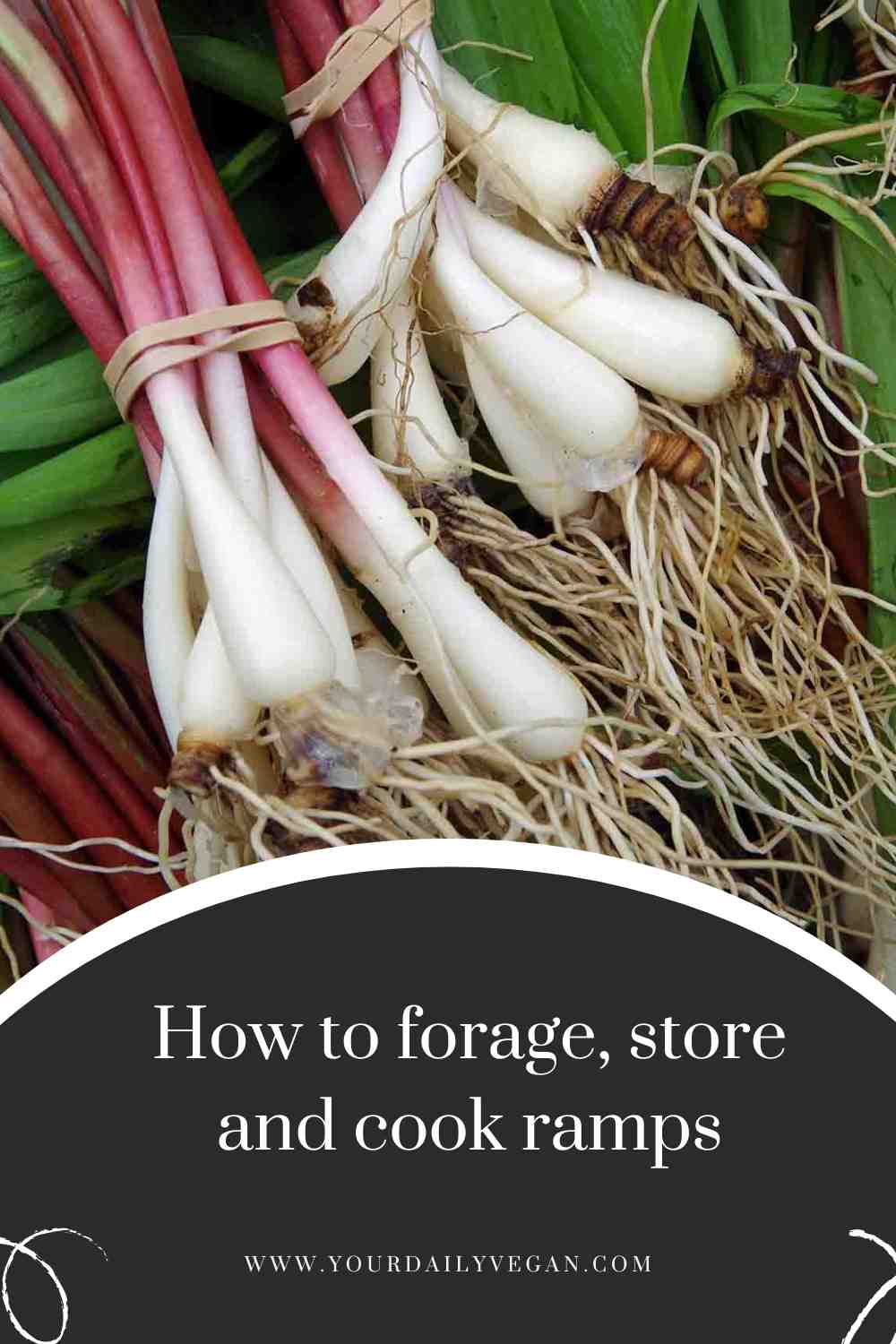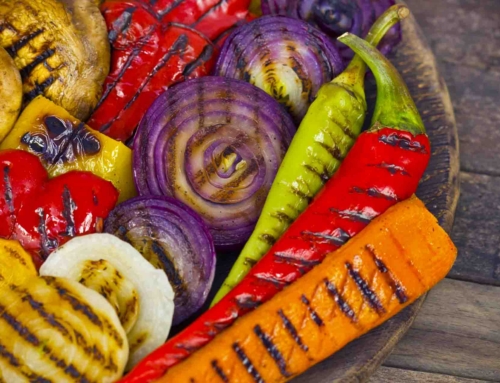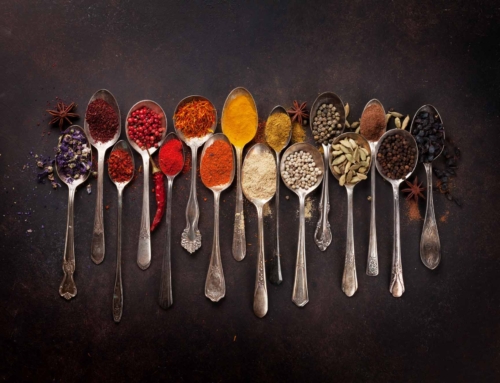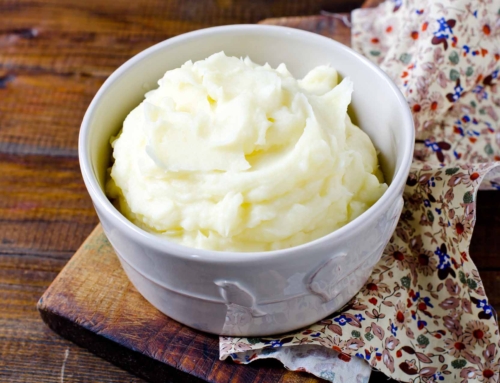How to Forage, Store, and Cook Ramps
Disclosure: This post may contain affiliate links
Ramps are among the earliest plants to emerge in the new season. Here's how to forage, store, and cook these delicious plants.
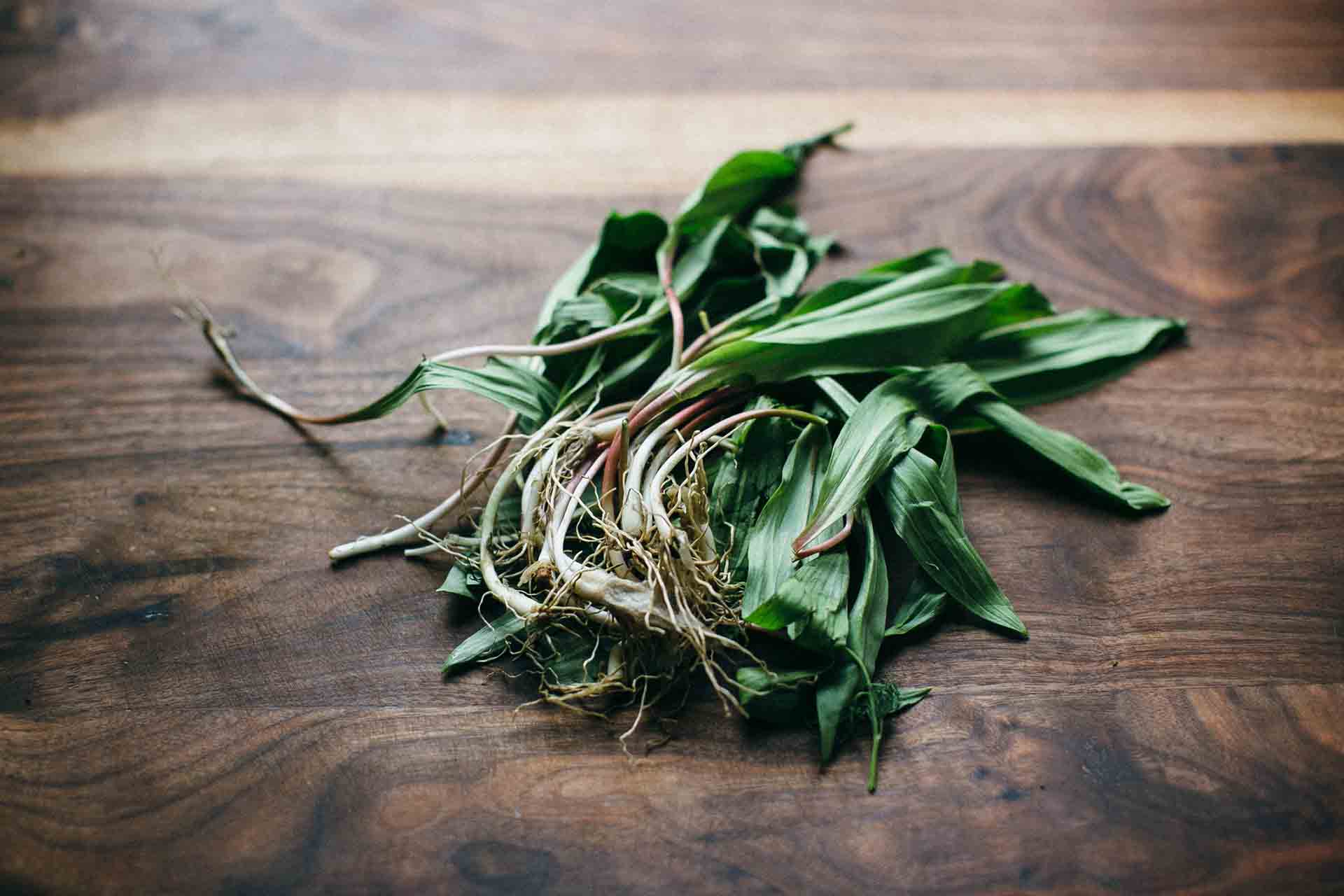
What's in this post
An introduction to ramps
Often called the first greens of spring, ramps are among the earliest plants to emerge in the new season. Look for them at farmer markets from April through May or sometimes early June.
That means one thing; it’s ramp season!
Botanically known as Allium trioccum, ramps are a member of the allium (onion) family native to North America, particularly in the Appalachian regions.
These delicious plants live in rich, moist soil and forest environments, shooting up big, green leaves in spring that eventually give way to white blossoms.
They’re pretty beautiful in wooded settings.
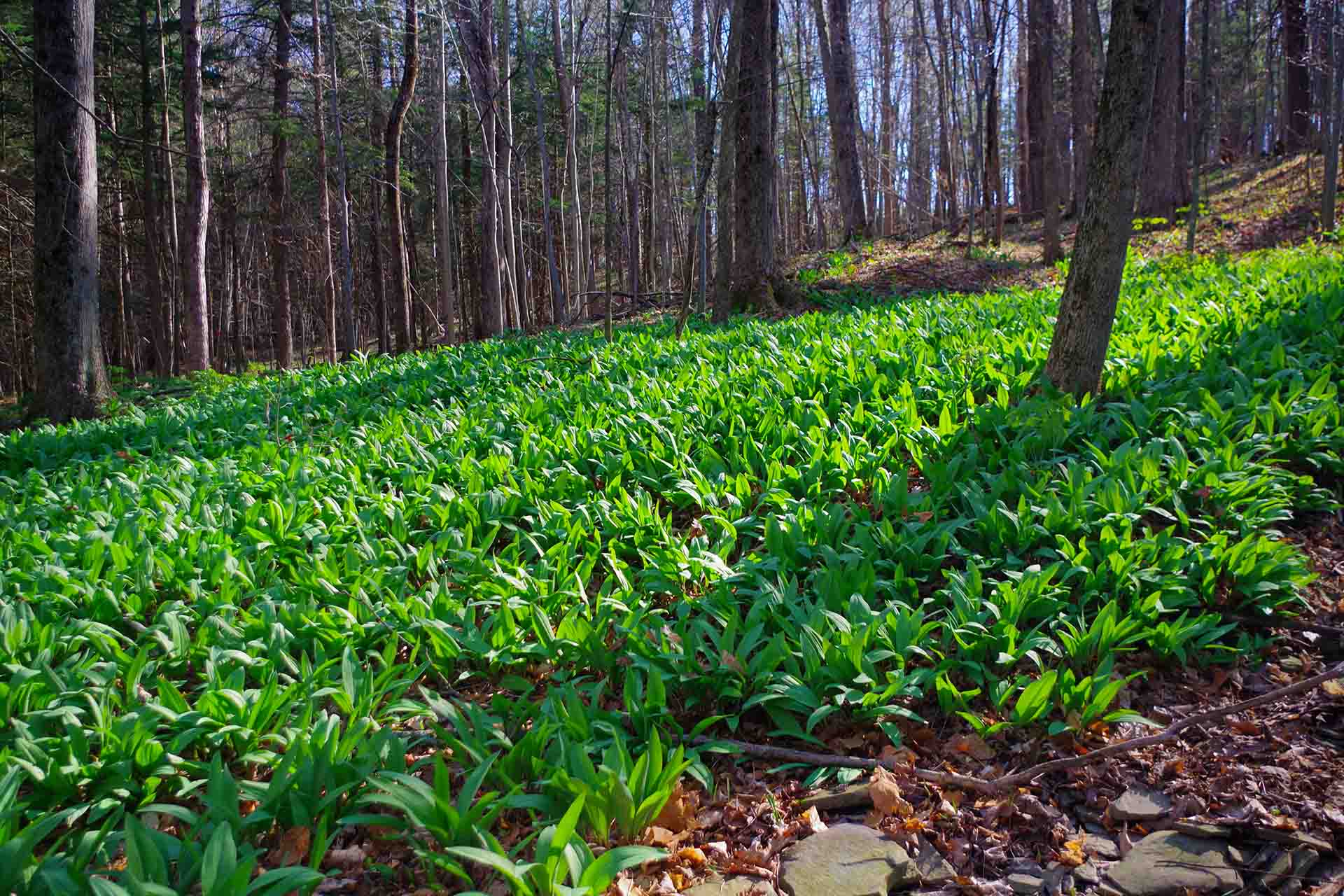
A wooded hillside filled with ramps / Source
How to sustainably harvest ramps
Ramps can be a divisive topic depending on who you’re talking to. Harvesting them sustainably has become a controversial subject among foragers and connoisseurs alike.
The problem and foremost concern, since seeds can take 6 to 18 months to germinate, and the plants themselves can take 5 – 7 years to produce seeds, is over-harvesting.
If you plan to forage independently, you should follow a few sustainability guidelines.
Avoid harvesting from small, immature, or flowering plants. Don’t dig them up by the roots. Instead, take only half of each clump, and replant the rest and its rhizome (roots). And aim for ten percent or less of the entire plant.
Foragers are also encouraged to scatter ramp seeds on their patches to replenish them in the fall.
Or, avoid the problem entirely by growing them at home.
Festivals and celebrations
Are you a real ramp lover? You may want to attend one of the many springtime ramp festivals held yearly in the U.S.
The community of Richwood, West Virginia, holds the annual “Feast of the Ramson” every April. Sponsored by the National Ramp Association, it’s described as “the granddaddy of all Appalachian Ramp Feeds.” Legend believes that the first public ramp feed began from a private meal attended by thirteen ramp lovers.
The Polk County Ramp Tramp Festival was founded in 1958 by 4-H club members who” tramped” up Big Frog Mountain to enjoy a hike on a spring day and a ramp meal. The Annual Ramp Festival in Waynesville, North Carolina, is now in its 85th year. One of the oldest ramp festivals in the United States is the “Cosby Ramp Festival” in Tennessee. This large festival has attracted as many as 30,000 visitors, and former President Harry Truman even attended.
Here in Ohio, an annual Ramp Up Pennisula happens in April of every year.
And these are just a few of the festivals held annually. Check local listings for events or festivals in your area.
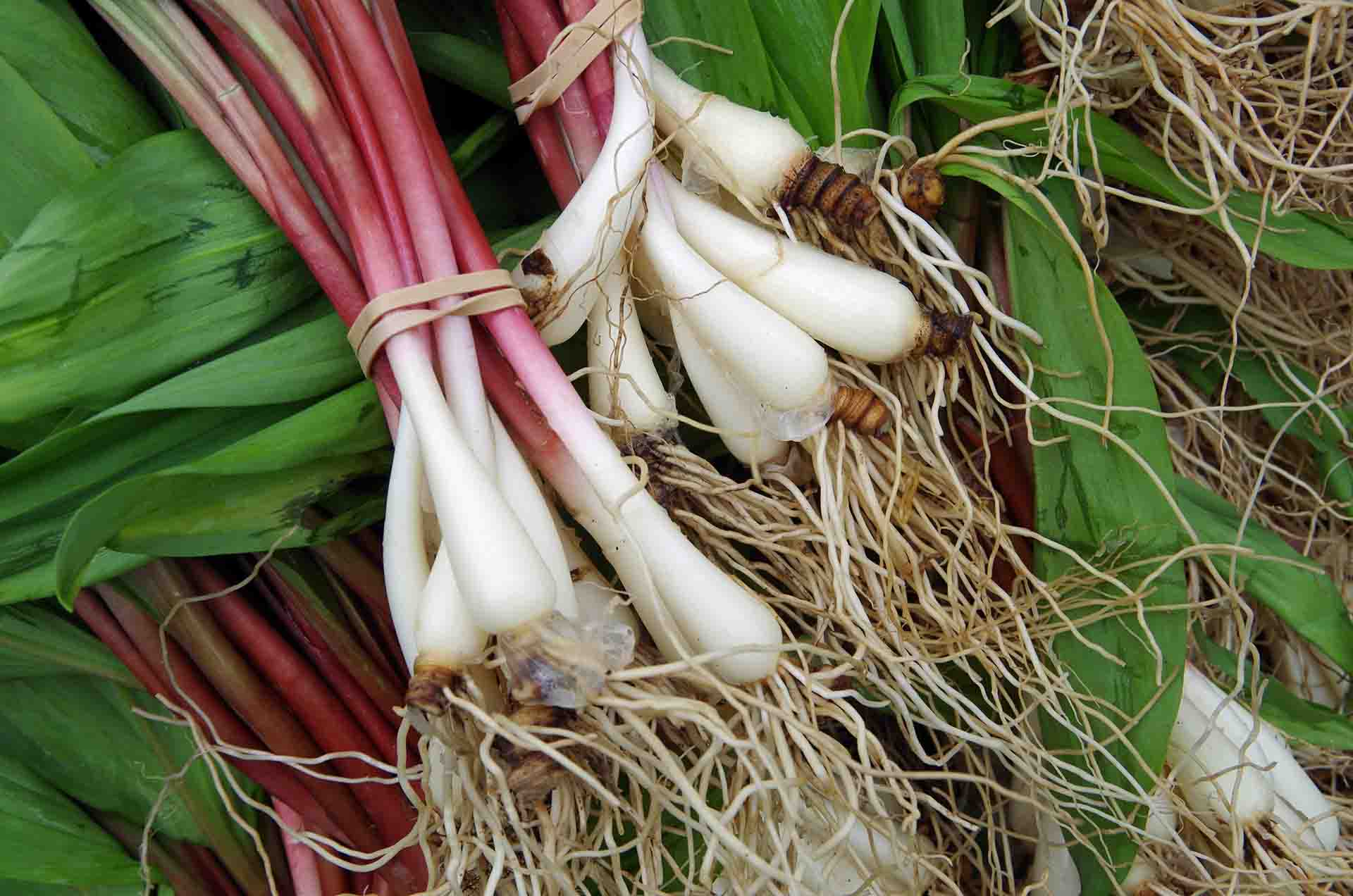
Fresh ramps with roots at a farmers market / Source
How to buy, cook, and store ramps
Because they have a short growing season, you won’t find ramps in the market year-round. They will appear first in their southern range in late March, with the season finally ending in the far north in early June.
When buying them, look for unblemished, bright green leaves with slender white stalks. Once home, store the plants unwashed and wrapped tightly in a plastic bag in the fridge, where they’ll stay fresh for around four to five days.
If you have ramps with the bulb still attached, place them in a glass or jar with water covering the roots. You can store them in the fridge, where they’ll stay fresher longer. With either storage method, remember that fresh is best, and you should use your ramps sooner rather than later.
Storage note: These plants have a bold, pungent smell that earned them the nickname “King of Stink.” Wrap them in multiple bags to prevent the strong garlic odor from affecting other foods. Wash them thoroughly in cool water before use.
Cooking ramps isn’t complicated. Because of their bold flavor, they work well in various recipes. Try replacing onions, scallions, or green onions with ramps, roasting or grilling them, pickling them, adding them to soups or stews, in pesto, and on pasta, and they make an excellent pizza topping.
They are incredibly versatile.

Wild Garlic & Asparagus Risotto / Lovely Jubley
Vegan ramp recipes
I have big plans for ramp season this year that include making delicious-looking Ramp Focaccia. In fact, researching ramp recipes for this article has led me to a lot of amazing and creative ways to use ramps.
Here are a few that I think you’ll want to try for yourself.
- Ramp Spaghetti
- Vegan Ramp Butter
- Ramp & Sorrel Risotto with Red Quinoa
- Grilled Potato & Ramp Salad
- Asparagus, New Potatoes, and Vegan Wild Garlic Pesto
Have you tried ramps? Have you ever foraged for them in a forest? I want to hear your story—tell me in the comments!
